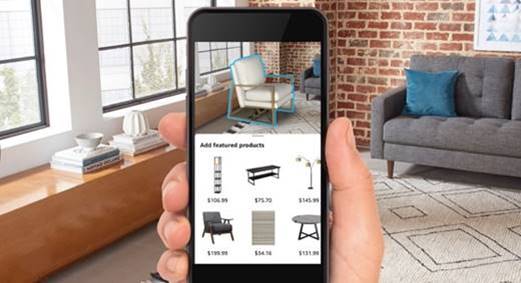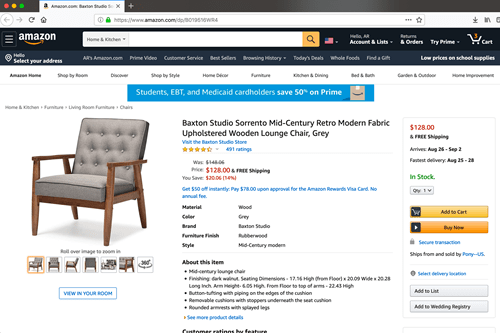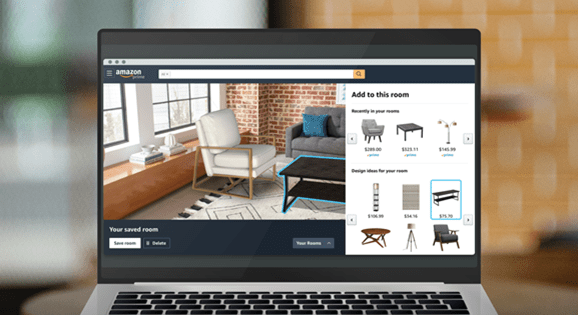Eduardo Saverin will forever be known for cofounding Facebook 16 years ago with four other Harvard classmates (one of whom is still running the company).
But even before splitting in 2009 for Singapore with his shares of the company, Saverin’s attention was on startup investing, and since 2015, he has been laser focused on B Capital, the five-year-old venture firm that he set up with another friend, Raj Ganguly, a former consultant and vice president at Bain Capital.
There’s a bit to manage. The two — along with three other general partners — are now overseeing more than $1 billion across four offices and two funds, both of which are anchored by the management consulting giant Boston Consulting Group (BCG). In fact, unlike most five-year-old firms, B Capital has from the outset — partly because of its close ties to BCG — been on a mission to identify interesting startups and trends across the world. A quick look at its portfolio underscores just how wide a net it is casting, with bets that range from Ninja Van, the last-mile logistics provider for delivery services in Southeast Asia, to the L.A. scooter company Bird, to Icertis, a Bellevue, Wa.-based contract management software maker.
We talked back in February with Ganguly about B Capital’s approach. Last week, as B Capital was closing its first bet on a startup headquartered in Latin America (Yalochat), we had the opportunity to talk with Saverin, too, about how he sees the firm growing from here. Our chat has been edited lightly for the length.
TC: You were born in Brazil.
ES: I was born and raised in Brazil, São Paulo, then I moved to the West [to Florida, then to Boston for school] and I ended up out here in Asia more than 10 years ago.
TC: I’m surprised you haven’t invested in the region sooner. I’m assuming — maybe wrongly — that you spend time there and have relationships there?
ES: Good things take time. For me, it’s a question of getting to know an ecosystem and getting ready to invest in it. We really do think about investing longer term in a truly global fashion, and we look at entrepreneurs who think of themselves also in a borderless world where they can start in a particular country region, then leverage what they’ve learned to expand across the world. In the case of Yalochat, [a conversational commerce startup that’s headquartered in Mexico City], it’s a Latin American business that is already today in Asia, but could they be the rest of the world? Absolutely. There are these more fabled stories of U.S. companies expanding elsewhere in the world, and even Chinese companies. But why couldn’t a Latin American company do that, or an African company? Our view is that they can.
My background, coming from Latin America, having lived in the U.S. and now living in Asia, [I’m] humbled by the fact that the world isn’t the same. So while we as a firm think about ‘global first,’ it doesn’t mean every part of the world is the same. You need to learn, adapt, get better, and get smarter about how each region works and how to do business there. So for us, we didn’t start on day one investing absolutely everywhere, but that is the mission.
TC: I talked with Raj not so long ago and he mentioned that one of B Capital’s startups has a business development person and a sprinkling of other employees in in Silicon Valley even though the company isn’t selling into U.S. markets. He said it “helps them get a better valuation.” Are others of your founders doing this, too? Should they?
ES: We talk a lot about the world of innovation past Silicon Valley. But that’s not because you should ignore Silicon Valley. It’s simply because I think there’s been over the years an overemphasis that it’s the be-all center of the innovation. You can’t go to the point of ignoring it — it’s actually critically important, and it will continue to be a big part of entrepreneurship. So we don’t ignore it. But I think it’s important to understand that its dominance won’t remain — not because it won’t do as well but because other parts of the world will do well.
As for whether companies think about creating offices in Silicon Valley, absolutely if it fits the requirements of that particular business. The Valley is a tremendous enabler, but it’s also challenging because for talent, for example, you’re in competition with a wide array of heavily funded companies, For instance, we have an autonomous driving technology company we have backed out of Europe, and if you think about the talent that they can acquire there versus the Valley and some of the price points, and you go down to the bottom-line enablement of that business, they certainly should maintain a large part of their engineering staff in their initial [European] headquarters. But they do have an office in Silicon Valley because I think there are very unique angles that they can bring to bear in terms of talent and skill set in Silicon Valley.
TC: How do you get comfortable with founders all over the world when your firm is sizable but not enormous? You don’t have an office in Europe. You don’t have an office in Latin America. Will that change?
ES: We don’t have what I would say is a dedicated staff [in either region] but because of our approach is a partnership-enabled approach — as an example, one of our big partners in our firm is the Boston Consulting Group and they have offices across Latin America and a deep on-the-ground presence — a lot of the time we get introduced that way.
More broadly, our investments come from a variety of means that includes both relationships with founders who we’ve gotten to know time and who may have relationships with other upcoming founders and investors, so we also get introduced that way.
TC: What piqued your interest about Yalochat specifically?
ES: It’s a company that’s looking to enable large enterprises on top of the messaging world, which is something we’ve looked at very deeply. There’s a lot of examples in Asia of how messaging applications and conversational commerce has been incredibly effective at enabling a reconstruction of how enterprises engage with their end consumers. So [using] that pattern recognition, we started looking at the space in other parts of the world and at winners in an economy like Latin America, where messaging is just huge.
Facebook use in Brazil, for example, is number three in the world after India and the U.S., so it’s a huge market for social. It’s a massive market for messaging.
TC: Have you invested in conversational commerce apps elsewhere in the world?
ES: No, as we take a bet on each of these categories, we like to back one entrepreneur and go with him across the world.
TC: But you have two scooter type companies in different parts of the world — Bird in the U.S. and Bounce in India — because the markets are so different. Is that an exception to the rule? Do you think in some cases it makes more sense to bet on local players?
ES: I think in this particular case, when we’re talking about the enablement of new mobility mobility solutions, we viewed the India spoke solution and problem as massively different than what Bird was solving in more developed economies. I think Bird can be pan-global and that it has shown the capability to grow globally. But the India equation was a very different one for Bounce, where you’re seeing a company that looked at [executing on] public transportation enablement at incredibly low cost and doing it with a proven, tested, multi-decade medium, meaning traditional Vespas and motorcycle-style scooters in the region. So these were very different companies at incredibly different price points that I would say are more complementary than anything.
TC: You’ve also made numerous fintech bets in India and Indonesia, I know, and you’re looking to do more of the same in Latin America, where there is similarly a massive number of people who are underbanked or unbanked. How important would you say your relationship with Boston Consulting Group in seizing on this opportunity?
ES: The idea is to build a big team [at B Capital], but to be enabled truly by partnerships, like with BCG, which help us bring to bear corporate relationships to our startups. If you think about it, the past few decades have been about the rise of the consumer internet. The next few decades will be about how you’re going to bring digital transformation to large traditional industries. These are industries that much larger than the industries that Facebook or Google tackled in the beginning. The advertising industry is a minuscule part of the GDP. We look at it in comparison to health care, financial services, or logistics, and technology innovation is going to start touching these massive industries.
As an entrepreneur, should you consider doing it without partnering and leveraging the distribution, regulatory know-how, and capital of the largest companies in that space? I know the startup timeline is very different than the corporate timeline in terms of how quickly the clock ticks. But our goal is to be a translation engine and a partnership engine between those industries, which creates a win-win.
It’s less about entrepreneurs in a dorm room trying to “out innovate” and take out the largest businesses in the world. In a lot of cases, it’s thinking about, ‘Can I do it faster if I leverage an asset or a distribution network or the regulatory reality of a large business, and can I create a win in doing that?’ We’re trying to make innovation not just about disruption but about positive and neutral transformation. I think that it will become part of the story. It’s not always going to be the story. But it will become a more important part of the story as you start seeing innovation begin transforming large, traditional industries versus [what we’ve seen with] the consumer internet.






 Level’s ex-Apple team hardware design chops are on full display with this new product. The outside design is definitely the most sleek and subtle smart lock you can find on the market – lacking even Level’s own branding, except for the smartly placed logo on the very end of the deadbolt itself (which doubles as the CR2 battery compartment for the lock, by the way). It’s a fantastic-looking product that should blend seamlessly into any decor, thanks to the various finishing options.
Level’s ex-Apple team hardware design chops are on full display with this new product. The outside design is definitely the most sleek and subtle smart lock you can find on the market – lacking even Level’s own branding, except for the smartly placed logo on the very end of the deadbolt itself (which doubles as the CR2 battery compartment for the lock, by the way). It’s a fantastic-looking product that should blend seamlessly into any decor, thanks to the various finishing options. In the box, you’ll also find two NFC-enabled keycards that can be programmed with access to your Level Touch (or more than one). Programming them is as easy as tapping your phone to the cards when directed to do so in the Level app, and you can revoke access to the cards remotely at any time if you need to. The built-in NFC in the locks can work with any programmable NFC device, so you can create your own keys using the readily available, inexpensive tags that you can pick up from Amazon, too.
In the box, you’ll also find two NFC-enabled keycards that can be programmed with access to your Level Touch (or more than one). Programming them is as easy as tapping your phone to the cards when directed to do so in the Level app, and you can revoke access to the cards remotely at any time if you need to. The built-in NFC in the locks can work with any programmable NFC device, so you can create your own keys using the readily available, inexpensive tags that you can pick up from Amazon, too.